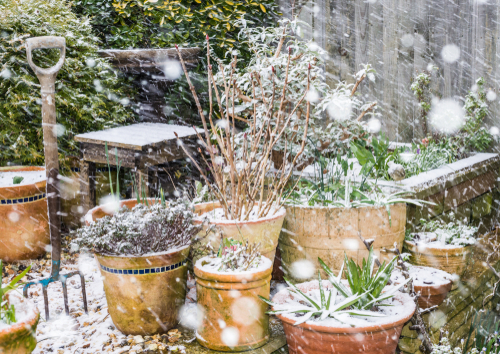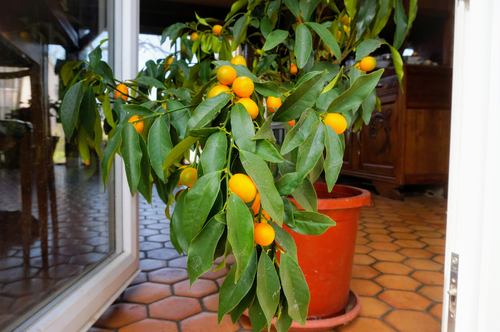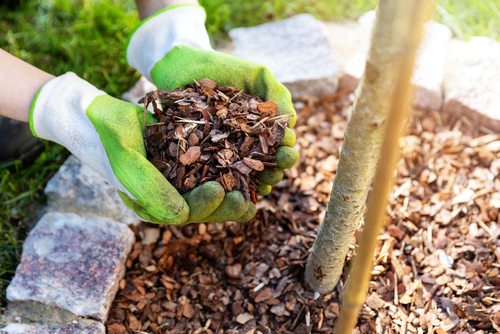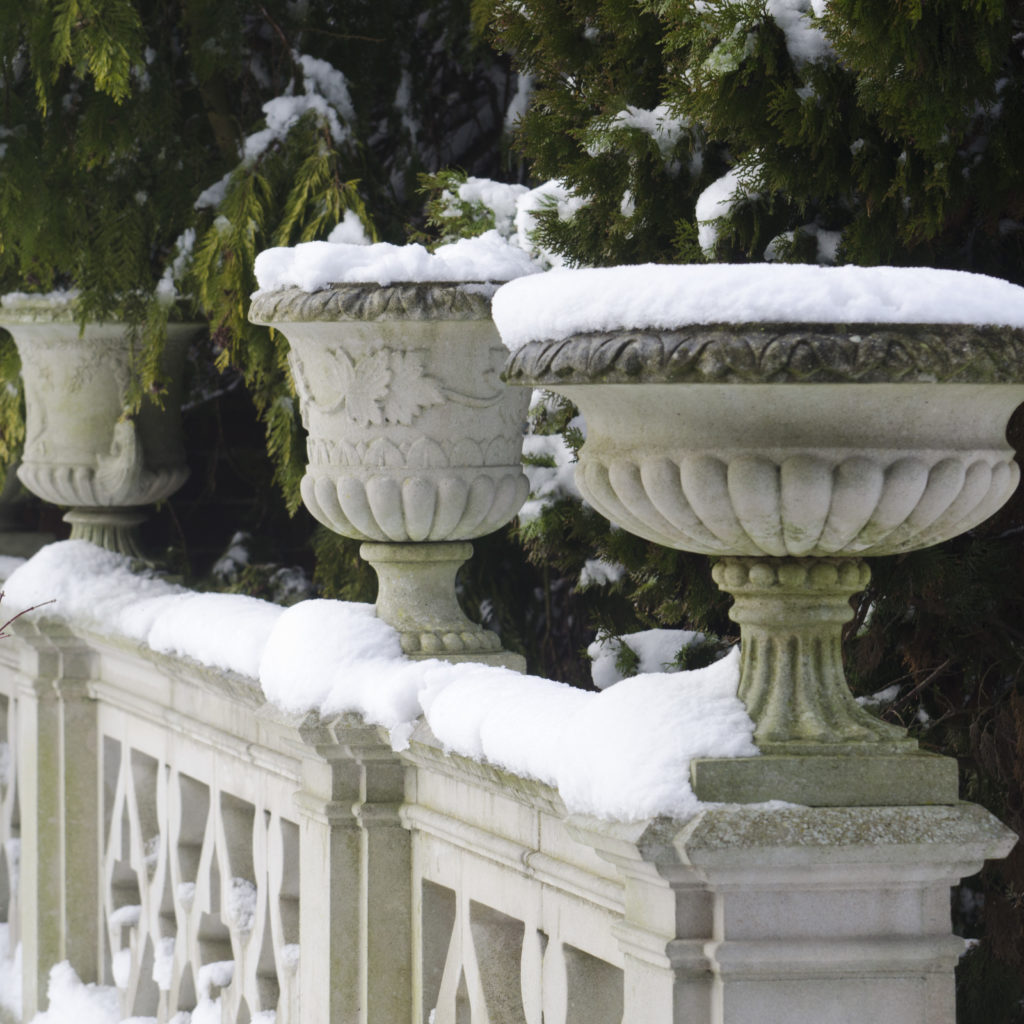- Home
- Blogs and News
- Blog
- Caring For Container Gardens In Cold Weather
Caring For Container Gardens In Cold Weather
Winter is just three weeks away and for some of us, we’ve experienced a very cold snap already.
From now until the end of March, when the temperatures start to rise again, it’s a good idea to protect your container plants.
We’ve answered some of the most common questions on caring for container gardens in cold weather below.
How do I protect my potted plants in the winter?
Plummeting temperatures, frost, snow and seemingly never-ending rainfall can cause a lot of damage in our gardens. So it’s best to be prepared.
There are three simple ways to protect potted plants during the cold, winter months. Move. Cover. Mulch.
It’s worth keeping this in mind at the very start of the winter and these three simple tricks will safeguard tender perennials and evergreens.
Which plants should I move over the winter?
There are many outdoor plants that will need to be moved under cover or indoors over the winter.
Tropical plants, citrus, begonia and gladiolas all rely on warm temperatures and shelter to thrive, so simply moving them to a less-exposed spot in the garden won’t provide them with enough protection. Instead, these fragile plants should be placed in a warm, sunny location indoors. A south-facing window sill or a conservatory is ideal.
Hardier perennials and evergreens will be fine left outside throughout the winter, as long as they have shelter from harsh, windy conditions, frost and snow. For example, hebe, skimmia japonica, hellebores and euonymus will all survive if left in their planters under an awning or beneath a well-covered spot.
What can I use to protect my plants over the winter?
It’s worth providing some extra protection to any plants that you do decide to leave outside in their containers over the winter.
Mulching can be applied at any time of the year, but has real added benefits during the winter.
A tried and tested way to trap in moisture from wet weather, mulching also ensures that your container soil doesn’t dry out too quickly before the warmer months.
During winter, mulching with coarse-textured organic materials, bark chips or straw will keep your plants warm and insulated during frost and snow. These natural mulch materials will also break down during winter, adding essential nutrients to the soil and helping to improve drainage.
How do I cover my container plants over the winter?
Wrapping your container plants with an insulating material will prevent cold damage throughout the winter months,
Bubble wrap and hortucltural fleece are both ideal materials to provide your plants with extra protection. Avoid using plastic sheeting to wrap your containers though, as it isn’t breathable, meaning it can cause too much moisture to become trapped inside.
When covering your containers, always make sure you create a water-tight shield around both the plant and the container. Thick parcel tape and twine are good accessories for keeping the material in place.
When should I stop watering my plants over winter?
Whilst many species of plants slow down or go dormant during the winter, they will still require water to survive. If their roots dry out, it can cause a lot of stress to the plant and even permanent damage.
As a general rule of thumb, the Royal Horticultural Society advises to reduce how much water you provide your plants with over the winter and to start regularly watering them again from early May.
In areas that experience little snow and frost, perennials should be watered roughly once per month to keep them healthy. Likewise, if rain is forecast before freezing temperatures, avoid watering your plants to reduce the likelihood of a cold injury to your plants’ root systems.
Can I leave my plant containers outside all winter?
Whilst many outdoor garden plants will survive even the coldest of seasons, not all containers are quite up to the job.
For example, plastic and wooden planters are much more fragile than their stone or metal counterparts, meaning that they can easily weaken with the changing temperatures.
Likewise, metal planters will often rust when exposed to too much moisture, which can permanently damage their look and structural integrity.
Cast stone planters, on the other hand, are a great investment. Cast stone is incredibly robust and Haddonstone’s garden and landscaping designs can comfortably withstand even the coldest of temperatures. Frost-resistant, they can be left outside year-round, ensuring that you can use them straight away once the spring temperatures set in.
Timeless designs for every garden
Our friendly Home & Garden team would be delighted to talk you through our range of stylish cast stonework.
From our extensive range of traditional and contemporary planters, to our stylish water features, garden building and sundials, we are confident you’ll find a design you love.
Call us on 01604 770711 or arrange a call back at a time that works for you.
Simply complete this short form and we’ll get back to you:
Speak to our team
Whether you’re working on a private residential or large commercial project, or if you are interested in home and garden products, our friendly and expert team are happy to discuss your requirements.






